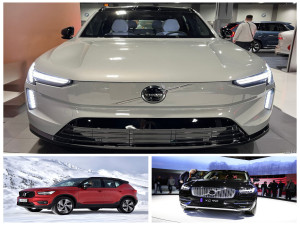The automotive industry is poised for an exciting transformation with the arrival of new 2026 models, showcasing advancements in technology, design, and sustainability. Manufacturers are pushing boundaries to meet evolving consumer demands and regulatory requirements, resulting in vehicles that are not only more efficient but also packed with innovative features.
One of the most notable trends for 2026 is the acceleration of electric vehicle (EV) adoption. Major automakers are expanding their EV lineups, offering a broader range of options from affordable compact cars to luxury SUVs and high-performance sports cars. These new models often feature improved battery technology, which translates to longer driving ranges and faster charging times. Additionally, many EVs now come equipped with enhanced driver-assistance systems and advanced infotainment interfaces, providing a seamless blend of safety and convenience.
Hybrid vehicles continue to play a significant role in the transition toward electrification. Several manufacturers are introducing plug-in hybrid variants that offer greater electric-only range, making them practical for both city commuting and longer trips. This approach helps ease consumers into full electric driving while maintaining the flexibility of a gasoline engine.
In terms of design, 2026 autos are embracing sleek, aerodynamic profiles that improve efficiency without sacrificing style. Interior spaces are becoming more spacious and comfortable, with high-quality materials and customizable ambient lighting setting new standards in cabin luxury. Connectivity remains a key focus, with many cars integrating smartphone compatibility, over-the-air updates, and voice-activated controls as standard features.
Safety technology is advancing rapidly as well. New models are equipped with sophisticated sensor arrays that support features such as automatic emergency braking, lane-keeping assist, adaptive cruise control, and even semi-autonomous driving capabilities. These systems not only enhance driver confidence but also contribute to reducing road accidents.
Sustainability extends beyond powertrains to manufacturing processes too. Automakers are investing in eco-friendly materials and production methods to minimize environmental impact throughout a vehicle’s lifecycle.
Overall, the new 2026 autos represent a significant leap forward in automotive innovation. Whether through electrification, cutting-edge technology, or refined design, these vehicles cater to a future where driving is safer, cleaner, and more enjoyable than ever before. Consumers looking ahead to 2026 have much to anticipate as the industry continues its rapid evolution toward a smarter and greener mobility landscape.

